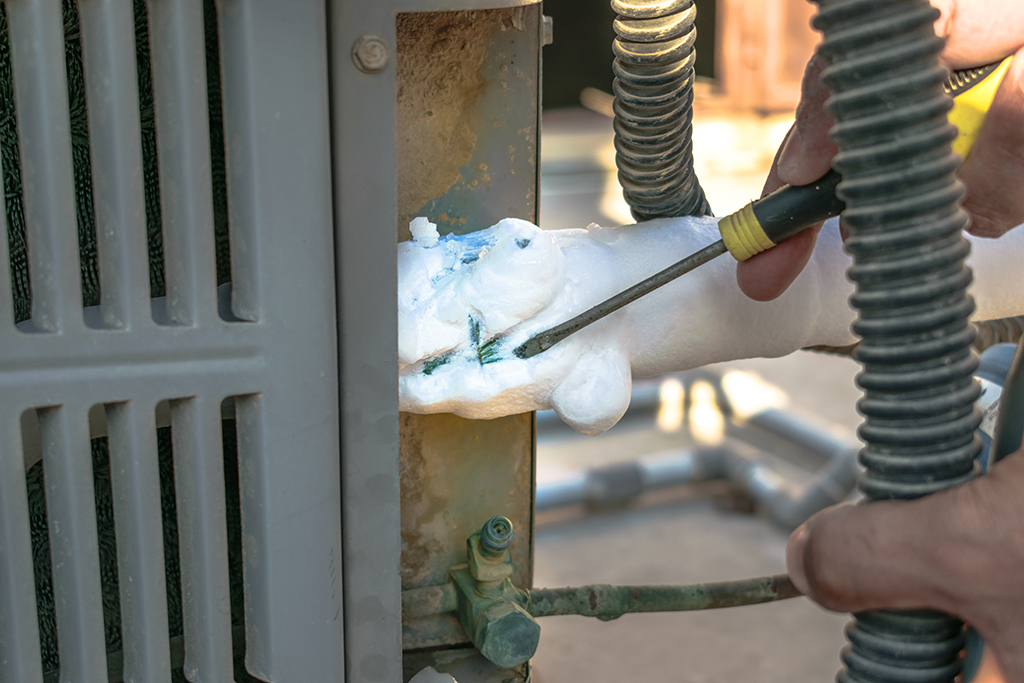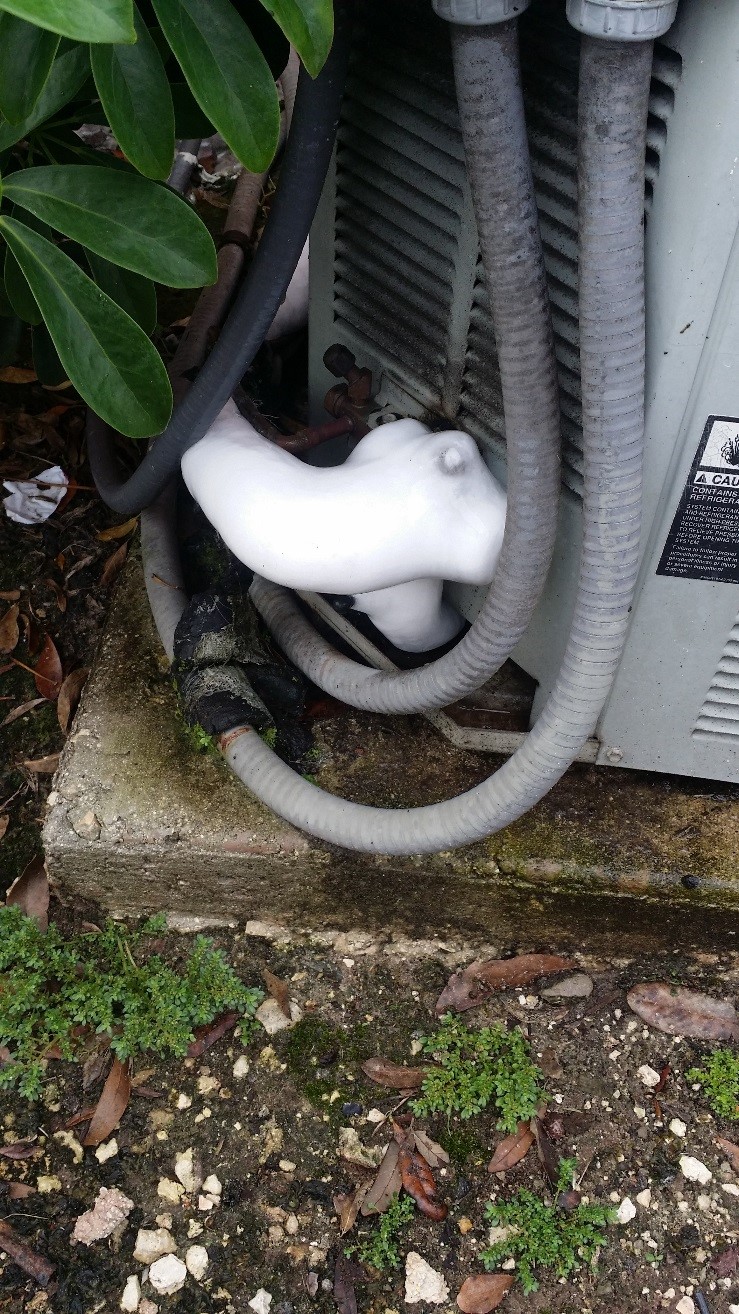What to Do If Your AC Pipe is Frozen: Comprehensive Manual
What to Do If Your AC Pipe is Frozen: Comprehensive Manual
Blog Article
We have noticed this article pertaining to Have a Frozen AC Line? Here’s How to Fix It below on the web and thought it made sense to talk about it with you on my blog.

Introduction
Finding that your air conditioner pipe is iced up can be worrying, specifically during hot summer months when you count on your a/c unit one of the most. Comprehending what to do in such a scenario is critical to prevent more damages to your cooling system and guarantee your convenience inside.
Recognizing the Causes
Several variables can contribute to the cold of an AC pipe. Recognizing these causes can help you attend to the issue successfully.
Absence of Airflow
One usual cause of a frozen a/c pipeline is inadequate airflow. When the airflow over the evaporator coil is limited, it can create the coil to go down below freezing temperature level, leading to ice development on the pipe.
Reduced Refrigerant Levels
Inadequate refrigerant levels in your air conditioning system can also cause an icy pipeline. Reduced refrigerant levels can create the pressure in the system to drop, bring about the cold of wetness on the evaporator coil.
Cold Weather Conditions
In cooler environments, freezing temperature levels outside can add to the freezing of a/c pipes. If your AC unit is not appropriately protected or if there are leakages in the ductwork, cool air can penetrate the system, triggering the pipe to ice up.
Dirty Air Filters
Unclean or clogged up air filters can limit airflow in your air conditioning system, causing different problems, including a frozen pipe. It's important to change or cleanse your air filters on a regular basis to make certain correct air movement and protect against ice accumulation.
Signs of a Frozen AC Pipe
Recognizing the indicators of an icy air conditioner pipeline is important for prompt activity.
Minimized Airflow
If you notice a considerable decline in air flow from your vents, it can indicate an icy pipeline.
Ice Buildup on the Pipe
Visible ice buildup on the refrigerant line or the evaporator coil is a clear sign of a frozen a/c pipeline.
Strange Sounds from the Unit
Unusual sounds, such as hissing or bubbling, originating from your AC device can signify that there's ice existing on the pipeline.
Immediate Actions to Take
When confronted with a frozen AC pipeline, it's necessary to act promptly to prevent more damage to your air conditioning system.
Switching off the air conditioning
The first step is to turn off your air conditioning system to prevent the system from running and intensifying the problem.
Looking for Blockages
Check the area around the indoor system for any blockages that might be obstructing airflow, such as furnishings or drapes.
Defrosting the Pipe
You can use gentle approaches like placing towels taken in cozy water around the frozen pipeline to help thaw it slowly.
Safety nets
Taking preventive measures can help stay clear of future events of a frozen air conditioning pipe.
When DIY Methods Fail
If your efforts to thaw the pipeline or address other problems are not successful, it's time to employ a professional.
Value of Hiring a Professional HVAC Technician
A licensed HVAC professional has the knowledge and tools needed to identify and fix concerns with your air conditioner system safely and efficiently.
Regular Maintenance Checks
Set up routine upkeep contact a specialist HVAC specialist to make sure that your a/c system is running successfully.
Transforming Air Filters
Consistently change or cleanse your air filters to avoid airflow restrictions and keep ideal efficiency.
Shielding Exposed Pipes
If your AC pipes are exposed to cool temperature levels, take into consideration shielding them to stop freezing during winter months.
Looking For Professional Help
If DIY techniques stop working to deal with the issue or if you're unclear regarding how to continue, it's best to look for help from a certified HVAC service technician.
Final thought
Taking care of a frozen air conditioning pipe can be an aggravating experience, but recognizing exactly how to respond can help decrease damages and bring back convenience to your home. By recognizing the causes, recognizing the indicators, and taking timely activity, you can effectively attend to the issue and prevent future occurrences.
What to Do If Your AC Line Is Frozen
Make Sure All Supply and Return Air Vents Are Open
If you notice problems with airflow, the first thing you should do is check your supply and return vents. Supply vents distribute clean, conditioned air throughout your home. As this air becomes stale, it’s pulled into the return vent, where it’s reconditioned before being sent back out through the supply vent.
When these vents are closed, air won’t flow in the home. Before examining your AC, check the vents in every room and ensure they’re all open.
Check for a Dirty Air Filter
Another possible cause of limited airflow is a dirty air filter. Your air conditioner’s filters catch elements you don’t want to breathe in, such as dirt and dust. Over time, filters can become clogged, ultimately blocking air from flowing in and out. The lack of airflow can then cause the entire coil to freeze and will completely restrict any air from moving through it. The AC may need to be powered off for one to two days to allow the coil to thaw after replacing the filter to allow proper functioning of the unit. This debris can also accumulate on your AC’s evaporator coil, requiring a more serious repair. In general, air filters should be cleaned regularly (about every two weeks).
Assess Your Outdoor Unit
In addition to checking your AC, assessing the outdoor unit is a good idea. Also known as the condensing unit, it works with your interior unit to release heat outside. An issue with the outdoor unit can result in rising internal temperatures.
Overgrown Shrubs or Clogged Leaves
From leaves and twigs to shrubs and debris, there’s no shortage of outdoor elements that can accumulate around your condensing unit. When these elements get lodged inside the unit, they can block airflow. Fortunately, removing the blockage can solve the problem.
Sounds of a Broken Fan
Shrubs and leaves aren’t the only things that can impede your outdoor unit’s airflow. If the fan is broken, the unit won’t be able to properly get rid of heat — which means the internal temperature won’t go down. First, make sure the fan is spinning. If it is, check for the following sounds of a broken fan:
Buzzing Rattling Screeching Hissing Clicking Preventative Measures
Nobody wants to deal with a frozen AC line. In addition to causing problems with your air conditioner, they require professional repairs. On the bright side, there are preventative measures you can take to help ensure this issue doesn’t arise in the first place.
https://www.coopergreenteam.com/blog/what-to-do-if-ac-line-frozen

I'm just very eager about How can I fix an air conditioner’s frozen pipe? and I hope you enjoyed the blog post. Appreciated our piece? Please share it. Let other people locate it. We treasure reading our article about What Causes AC Pipes To Freeze?.
Go Deal Report this page